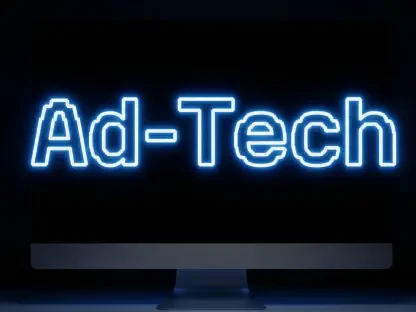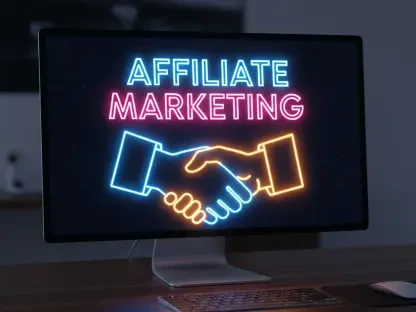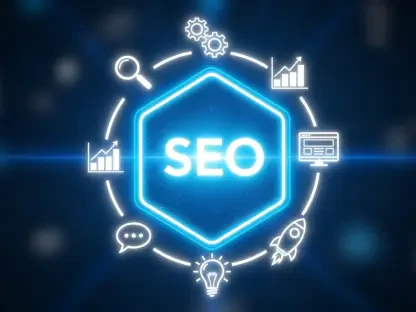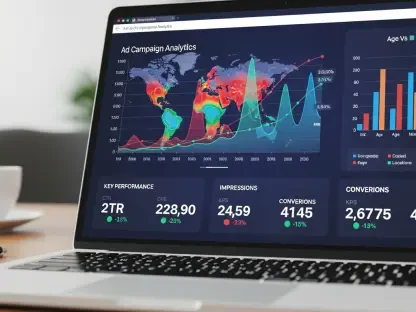Listen to the Article
Over 80% of buyers use digital channels to interact with products and make purchasing decisions. This whopping figure highlights the importance of a strong online presence in driving sales and engagement. Rising customer expectations, tighter budgets, evolving privacy laws, and longer buyer journeys are pushing B2B leaders to go digital. This article explores the top marketing models for 2025 and beyond, offering a guide to navigate demands and deliver immediate, sustainable revenue-generating outcomes.
The Full-Service Agency Model: Expertise on Demand
The full-service agency model is a popular choice for B2B brands looking to scale without building large in-house teams. With this approach, agencies offer a range of specialized services through flexible retainer or project-based contracts in areas such as SEO, paid media, email marketing, and content strategy.
The Key Advantages
Scalability: Businesses can adjust resources as needed for seasonal campaigns or special projects. This flexibility means companies can improve marketing efforts without the delays and costs of hiring new staff. At the same time, it allows for scaling down during slower periods, helping to optimize budgets and avoid wasted resources.
Access to innovation: Full-service agencies often adopt new tools and technologies faster than in-house teams. They invest in training and platforms that keep them at the forefront of digital marketing trends. This innovation ensures that businesses benefit from the latest strategies and technologies without having to manage the learning curve internally.
Performance-based incentives: Many agencies now offer results-driven pricing models, such as cost-per-lead and revenue share. This approach aligns the agency’s goals with the client’s success, creating a stronger partnership focused on measurable outcomes. Performance-based incentives give businesses greater confidence that their marketing investments will deliver real value.
The Challenges
Client and agency turnover: High turnover can disrupt continuity and affect long-term planning. Frequent changes make it harder to maintain a deep understanding of the brand and its goals, which can slow progress and affect campaign effectiveness.
Transparency and attribution issues: If success metrics aren’t clearly defined, it can be difficult to measure campaign performance accurately. A lack of clarity can lead to misunderstandings and misaligned expectations, making it difficult to optimize marketing for better results.
Looking ahead into the rest of 2025, organizations can expect to see more hybrid partnerships, where companies retain strategy in-house but outsource execution to agencies. The demand will increase for companies with deep B2B knowledge, vertical specializations, and clear strategies for measuring returns.
The Subscription-Based Model: Engineering Consistency
The subscription-based model thrives in Software-as-a-Service and marketing technology ecosystems, where businesses subscribe to platforms for marketing automation, content management, and analytics. Popular examples include HubSpot Marketing Hub and Grammarly for teams.
The Core Benefits
Recurring revenue: Predictable income from subscriptions provides businesses with financial stability and easier budgeting. This steady cash flow allows for better forecasting and investment in growth initiatives.
Customer retention: Ongoing product updates and continuous support help build long-term loyalty among customers. By regularly enhancing the offering, businesses keep users engaged and satisfied, reducing turnover rates.
Scalability: Subscriptions evolve as user needs grow, with additional features and services. This flexibility enables businesses to upsell and expand relationships without disrupting the customer experience.
Key Success Factors
Regular updates: Continuously improving features based on user feedback keeps the product relevant and valuable. This ongoing development ensures that the offering meets evolving customer needs and maintains a competitive edge.
AI-powered insights: Using AI allows businesses to personalize user experiences and optimize results. AI helps identify patterns and preferences, enabling smarter decisions and more effective marketing strategies.
Tiered pricing: Offering pricing options that scale with customer size provides flexibility and accessibility. This approach allows businesses to cater to a wider range of customers while maximizing revenue opportunities.
Subscription-based models will expand, with more vertical-specific tools emerging, including custom solutions for industries like manufacturing or logistics. This shift will allow businesses to access specialized solutions at scale, helping them stay competitive in niche markets.
The Performance-Based Lead Generation Model: Ensure High-Level Precision
Lead generation remains at the core of B2B marketing. With long buying cycles, capturing high-quality leads is essential. Performance-based lead generation models focus on acquiring leads through gated content, ad campaigns, and prospecting platforms, which are then sold to clients.
Tactics and Tech Stack
Programmatic advertising: Using account-based targeting helps reach the right prospects. This data-driven approach ensures ads are shown to decision-makers, maximizing ROI.
AI-assisted lead scoring: Platforms like Salesforce or Zoho CRM leverage AI to prioritize leads based on intent and fit. Smart lead scoring enables sales teams to focus on the highest-value prospects, speeding up the conversion process.
LinkedIn outreach automation: Automated LinkedIn campaigns, integrated with CRM systems to drive engagement, streamline outreach, and boost engagement. This tactic helps maintain consistent communication and nurture relationships at scale.
The Advantages
Revenue predictability: Clients typically pay per lead or opportunity, making it easier to forecast revenue with greater accuracy. This model provides consistent cash flow and helps align marketing efforts with sales outcomes.
High ROI: When combined with account-based marketing, lead generation delivers strong returns by focusing on high-value accounts. Targeted efforts reduce waste and increase the likelihood of converting key prospects.
Data-driven optimization: Advanced funnel analytics allow businesses to track lead performance and refine quality over time. This continuous improvement results in more efficient campaigns and better alignment between marketing and sales.
Compliance Risks to Consider
Data privacy: Businesses must adhere to regulations such as the General Data Protection Regulation and other global data privacy laws. Non-compliance can lead to hefty fines, reputational damage, and loss of customer trust.
Consent and transparency: It’s essential to ensure all leads are obtained with clear, verifiable consent and transparent data usage policies. Failure to do so can compromise legal compliance and erode credibility with prospects and customers.
As demand grows for AI-powered and compliant lead generation platforms, agencies will turn to providers who can deliver intent-based leads rather than generic data lists. Predictive analytics will also play a key role in shortening sales cycles and improving lead conversion.
Conclusion: Building a Resilient Marketing Strategy
The B2B digital marketing landscape is evolving from fragmented, tactical approaches to more holistic, outcome-driven models. The full-service agency, subscription, and lead generation models each offer unique benefits, but their success will depend on how well they align with a company’s internal capabilities, customer expectations, and compliance requirements.
B2B leaders in 2025 and beyond should test different strategies through pilot programs before scaling. This small-scale strategy minimizes risk, uncovers what works best, and ensures smarter resource allocation. At the same time, agencies should combine multiple approaches to maximize impact: use agencies for agility, subscriptions for revenue predictability, and lead generation for performance-driven growth. This blended model offers flexibility and resilience in a rapidly changing landscape. With the right model and tech stack, businesses can enhance efficiency and enable more personalized and measurable marketing strategies.









